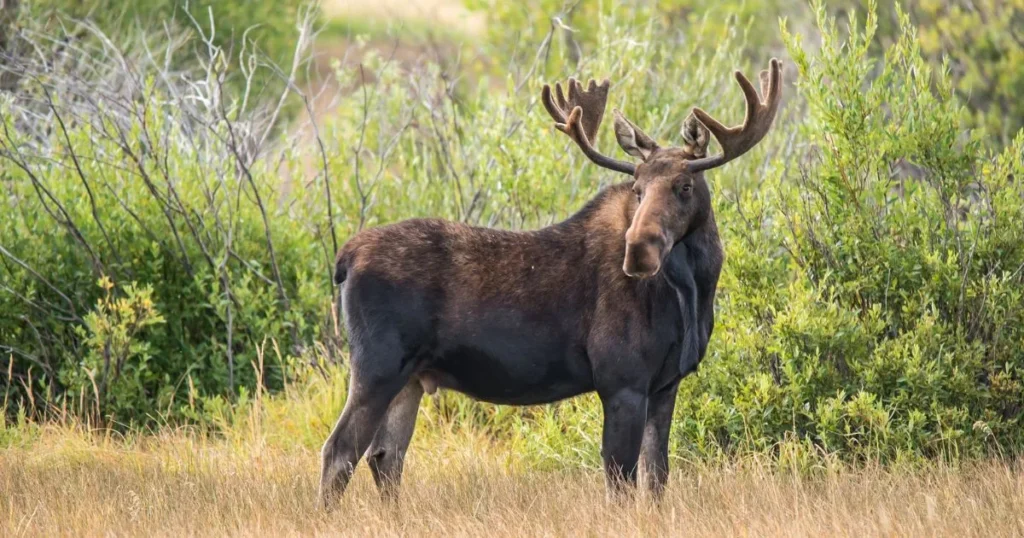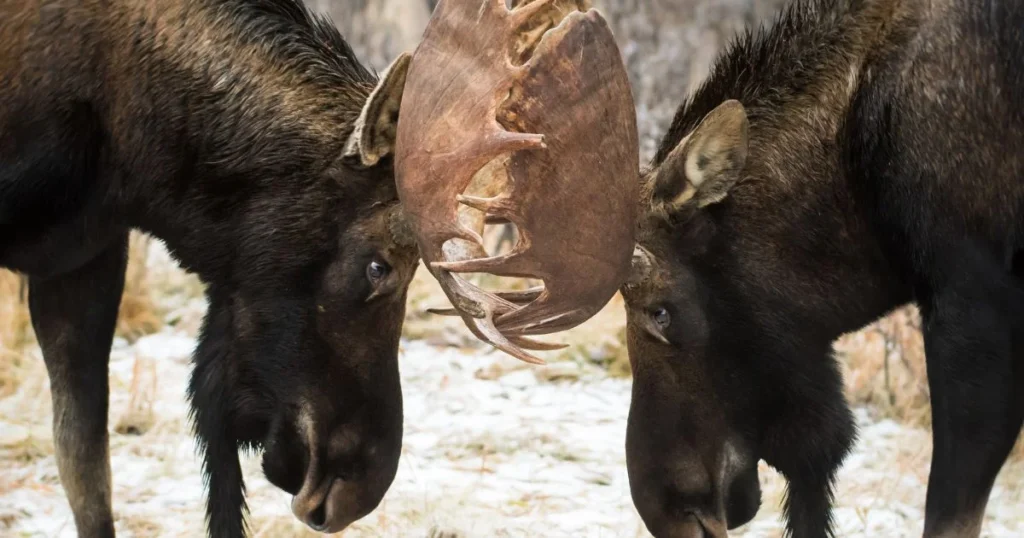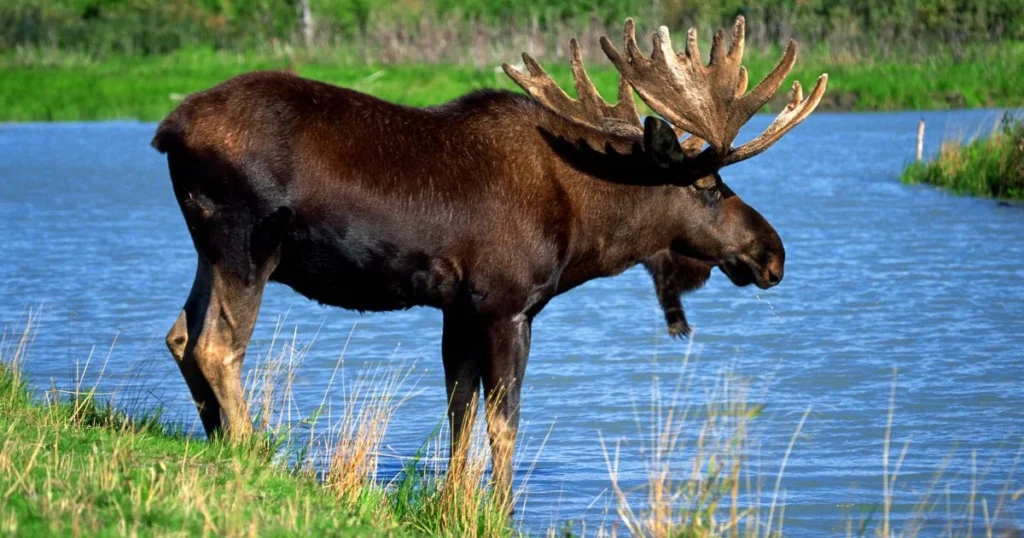
Moose are one of the most intriguing and majestic creatures in North America, often spotted in the forests and wilderness areas across Canada, Alaska, and parts of the northern United States. Their impressive size and distinctive antlers make them a fascinating subject for wildlife enthusiasts. However, their behavior towards humans is a topic that often leads to questions: do moose attack humans? Are moose dangerous? Are moose friendly? In this comprehensive guide, we will delve into the nature of moose interactions with humans, providing insights and safety tips for those who may encounter these giant mammals.

Moose are the largest members of the deer family, with males (bulls) often weighing up to 1,400 pounds and females (cows) around 800 pounds. Their size alone can make them intimidating. Generally, moose are solitary animals, preferring to roam the wilderness alone except during mating season or when a cow is with her calves.
Despite their size, moose are not inherently aggressive. They are herbivores, feeding primarily on leaves, twigs, and aquatic vegetation. However, their behavior can become unpredictable if they feel threatened or stressed. It is crucial to understand that while moose are not naturally aggressive towards humans, certain situations can provoke them to defend themselves.

While moose attacks on humans are relatively rare compared to other wildlife encounters, they do occur. The risk of a moose attack increases in certain scenarios:
Mating Season: During the rut (mating season) in late September to October, bull moose become more aggressive as they compete for mates. This can lead to heightened aggression towards anything they perceive as a threat or rival, including humans.
Mother and Calves: A cow moose with calves is particularly protective. If she perceives a threat to her young, she may charge to defend them. This is most common in the spring and early summer when calves are young and vulnerable.
Startled or Provoked Moose: Like many animals, moose can react defensively if startled. Hikers, photographers, and outdoor enthusiasts should keep a safe distance and avoid sudden movements when near these animals.
To minimize the risk of a dangerous encounter with a moose, consider the following safety tips:
Keep a Safe Distance: Always maintain a significant distance from moose. Use binoculars or a long lens for photography instead of approaching.
Avoid Feeding: Never feed moose. This can alter their natural behavior, making them more likely to approach humans and potentially increasing aggression.
Be Aware of Your Surroundings: When hiking or camping in moose territory, stay alert. Look for signs of moose such as tracks, droppings, or chewed vegetation.
Do Not Corner or Chase: If you find yourself near a moose, do not attempt to corner or chase it. This can provoke a defensive response.
Know the Signs of Aggression: Signs that a moose may be about to charge include laid-back ears, raised hairs on the neck, and grunting. If you see these signs, back away slowly.
While moose are not typically friendly in the sense that domestic animals might be, they can appear indifferent or nonchalant towards humans if not threatened. There are instances where moose have been observed calmly coexisting with people, particularly in regions where they are accustomed to human presence. However, this does not mean they are safe to approach. Always respect their space and remember that they are wild animals with their own instincts and needs.

Moose predominantly inhabit forested regions that provide ample food sources and water. They are especially fond of wetlands, lakes, and rivers, where they can feed on aquatic plants. Understanding their habitat is essential for those living in or visiting moose-populated areas, as it helps predict where encounters might occur.
In regions like Alaska, Canada, and the northern United States, urban expansion has led to increased interactions between moose and humans. These animals may wander into suburban areas, especially during winter, in search of food. While this can lead to spectacular wildlife viewing opportunities, it also increases the potential for accidents and conflicts.
Preventing conflicts with moose begins with awareness and respect for their needs and behaviors. Here are some additional strategies:
Secure Your Property: If you live in a moose-prone area, use fencing to protect gardens and landscaping. Moose are attracted to salt, so keep salt licks and road salt stored away.
Drive Cautiously: Moose are most active during dawn and dusk, times when visibility is low. Drive slowly in moose territories, and use high beams when possible to spot them early.
Educate Your Community: Awareness campaigns can help communities understand how to coexist safely with moose. Schools, local organizations, and wildlife agencies can collaborate on educational materials and workshops.

Conservation efforts play a crucial role in maintaining the balance between moose populations and human activities. By protecting their habitats and ensuring sustainable populations, conservationists help minimize the need for moose to enter human-occupied areas.
Research into moose behavior and ecology also contributes to safer human-wildlife interactions. Tracking movements, understanding dietary needs, and studying stress responses can all inform guidelines and policies that protect both moose and people.
Moose are remarkable animals that can inspire awe and wonder in those lucky enough to observe them in the wild. Understanding their behavior and respecting their space is key to safely coexisting with these magnificent creatures. While moose are not inherently dangerous, their size and strength mean that caution is always necessary when near them.
In conclusion, while moose can be dangerous under certain conditions, they are generally more interested in avoiding humans than confronting them. By understanding moose behavior, respecting their space, and taking appropriate precautions, we can reduce the risk of negative encounters and enjoy the presence of these majestic animals safely.
For more tips on safely observing wildlife and ensuring your outdoor adventures are safe and respectful of nature's inhabitants, remember to check our blog at Critter Stop. We have published more than one hundred articles related to wildlife. See you there!
Visit our Critter Library and learn more about our furry friends